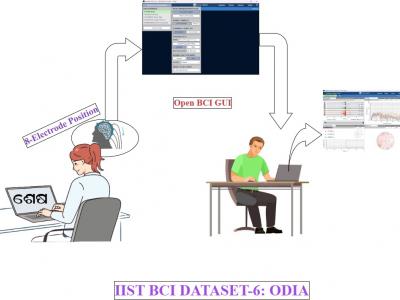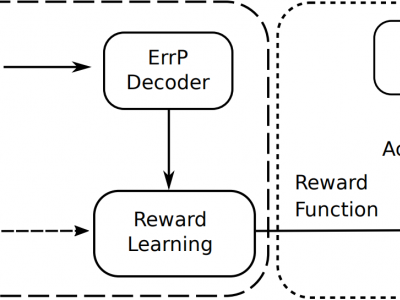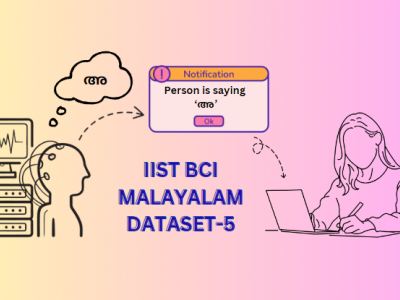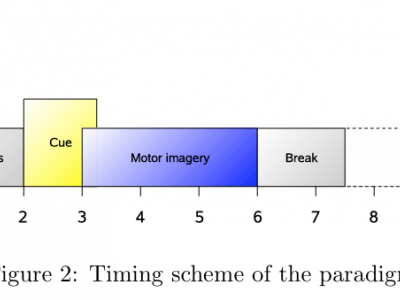Neuroscience
Brain-Computer Interface (BCI) is a technology that enables direct communication between the brain and external devices, typically by interpreting neural signals. BCI-based solutions for neurodegenerative disorders need datasets with patients’ native languages. However, research in BCI lacks insufficient language-specific datasets, as seen in Odia, spoken by 35-40 million individuals in India. To address this gap, we developed an Electroencephalograph (EEG) based BCI dataset featuring EEG signal samples of commonly spoken Odia words.
- Categories:
 362 Views
362 ViewsThis paper presents a dataset of brain Electroencephalogram (EEG) signals created when Malayalam vowels and consonants are spoken. The dataset was created by capturing EEG signals utilizing the OpenBCI Cyton device while a volunteer spoke Malayalam vowels and consonants. It includes recordings obtained from both sub-vocal and vocal. The creation of this dataset aims to support individuals who speak Malayalam and suffer from neurodegenerative diseases.
- Categories:
 2591 Views
2591 Views
Traditional authentication models are vulnerable to security breaches when personal data is exposed. This study introduces novel hybrid visual stimuli protocols integrating event-related potentials (ERP) and steady-state visually evoked potentials (SSVEP) to develop an authentication system that enhances both performance and personalization in neural interfaces. Our model utilizes distinctive neural patterns elicited by a range of visual stimuli based on 4-digit numbers, such as familiar numbers (personal birthdates, excluding targets), standard targets, and non-targets.
- Categories:
 31 Views
31 ViewsTo address the challenges faced by patients with neurodegenerative disorders, Brain-Computer Interface (BCI) solutions are being developed. However, many current datasets lack inclusion of languages spoken by patients, such as Telugu, which is spoken by over 90 million people in India. To bridge this gap, we have created a dataset comprising Electroencephalograph (EEG) signal samples of commonly used Telugu words. Using the Open-BCI Cyton device, EEG samples were captured from volunteers as they pronounced these words.
- Categories:
 460 Views
460 ViewsThis paper introduces a dataset capturing brain signals generated by the recognition of 100 Malayalam words, accompanied by their English translations. The dataset encompasses recordings acquired from both vocal and sub-vocal modalities for the Malayalam vocabulary. For the English equivalents, solely vocal signals were collected. This dataset is created to help Malayalam speaking patients with neuro-degenerative diseases.
- Categories:
 2857 Views
2857 Views
This is the supplementary document for the review paper titled “Comprehensive and Data-Driven Literature Review of Supernumerary Robotic Limbs,” which presents a comprehensive and data-driven review that offers a quantitative analysis of Supernumerary Robotic Limbs (SRLs), covering application areas, structural designs, control strategies, embodiments, and their interconnections.
- Categories:
 175 Views
175 Views
Finger Scanning Experiments: Participants conducted experiments while seated and wearing an eye mask to eliminate visual information. They were instructed to horizontally scan the surface back-and-forth eight times with one of their fingers to assess surface roughness. The finger's motion was optically captured at a frame rate of 60 fps. Scanning speed was determined by measuring finger positions at each frame and dividing them by the frame length. Image analysis was performed using OpenCV, where the finger outline was extracted from the video.
- Categories:
 115 Views
115 Views
Resilience is an important indicator of our defence mechanism against mental illness. Its assessment is conventionally done using psychological questionnaires and has also been recently investigated using neuroimaging modalities. These modalities provide objective and physiological-based assessment of resilience for prognosis and training purposes such as in the neurofeedback and behavioural therapies. This study investigates the use of electroencephalogram (EEG) to assess mental resilience in 2-Class, 3-Class and 4-Class models during resting and task conditions.
- Categories:
 221 Views
221 ViewsThis data set consists of EEG data from 9 subjects. The cue-based BCI paradigm consisted of four di erent motor imagery tasks, namely the imag ination of movement of the left hand (class 1), right hand (class 2), both feet (class 3), and tongue (class 4). Two sessions on di erent days were recorded for each subject. Each session is comprised of 6 runs separated by short breaks. One run consists of 48 trials (12 for each of the four possible classes), yielding a total of 288 trials per session.
- Categories:
 1555 Views
1555 Views




